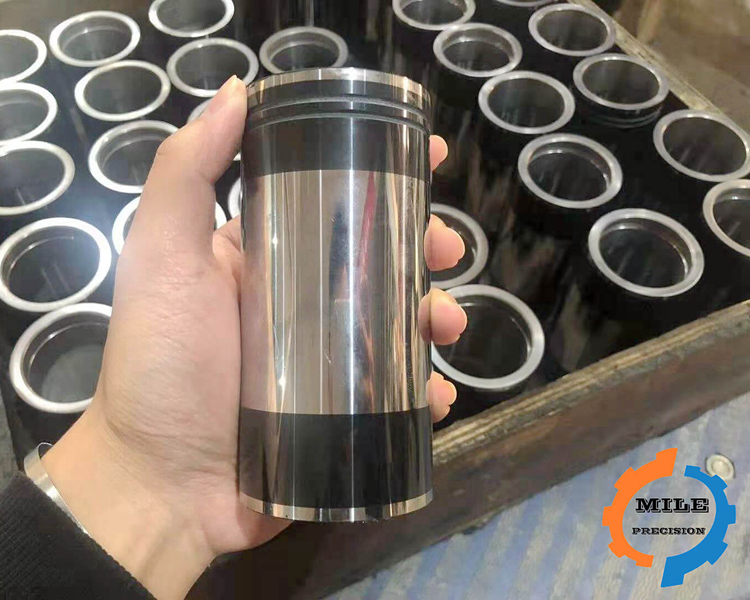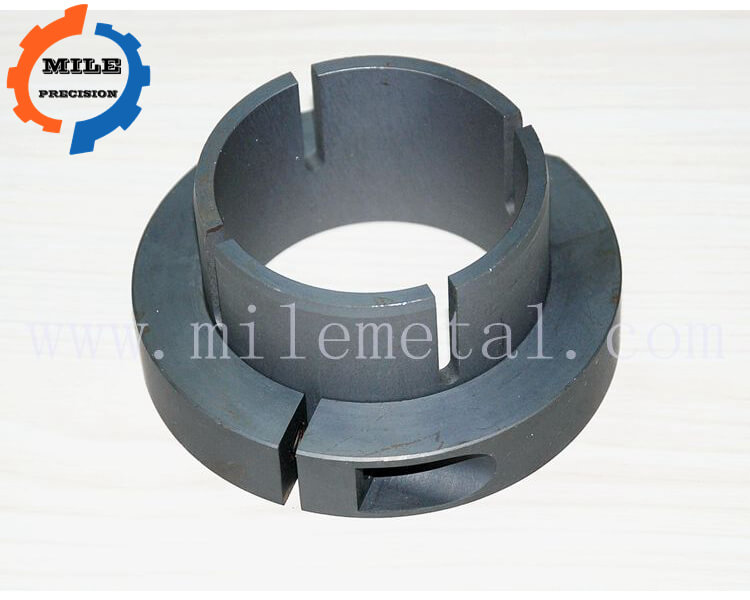The difference between hard nitriding and soft nitriding

Top Copper Component Manufacturers in China 2020,4 aixs CNC milling machining
2020-12-14
QPQ surface treatment introduction
2020-12-21Hard nitriding
Nitriding is a type of chemical heat treatment, also known as nitriding, which means that the workpiece is placed in a furnace gas containing “nitrogen” (ammonia), and the appropriate temperature, gas flow rate, ammonia concentration ratio, etc. are selected to maintain a certain level In time, the nitrogen element can penetrate into the surface of the workpiece to form a surface nitride phase with a very high hardness, resulting in higher wear resistance and fatigue resistance.
The temperature of nitriding treatment is usually in the range of 480~540℃ (it is necessary to maintain the hardness of the core of the workpiece and make the hardness of the nitriding layer reach the required value), and the treatment time is in accordance with the required depth (usually 0.1~0.65mm) Between) is different, generally 15 to 70 hours, or even longer.
This conventional nitriding is also called hard nitriding, as opposed to soft nitriding. http://www.milemetal.com

Soft nitriding
The scientific name of soft nitriding is “nitrocarburizing”, also known as “cyanidation”. The element penetrating the steel surface is mainly ‘nitrogen’, and ‘carbon’ is added at the same time. Soft nitriding is essentially a low-temperature carbonitriding based on nitriding. Compared with hard nitriding, the hardness of the nitrided layer is lower and the brittleness is smaller, so it is called soft nitriding.
Soft nitriding methods are divided into two categories: gas soft nitriding and liquid soft nitriding. At present, the most widely used in domestic production is gas nitrocarburizing. Gas nitrocarburizing is a low-temperature carbon and nitrogen co-nitriding in an atmosphere containing activated carbon and nitrogen atoms. The temperature is usually 560-570°C, and the nitriding time is usually 2 to 3 hours.
The current problem of gas nitrocarburizing is that the thickness of the iron-nitrogen compound layer in the surface layer is relatively thin (0.01~0.02mm), and the hardness gradient of the nitride layer is steep, so it is not suitable to work under heavy load conditions.
The meaning of “soft nitriding” does not mean that the obtained hardness is lower than that of the so-called “hard nitriding”, but it means simple, labor-saving and low cost.
Hard nitriding is applied to workpieces with high load and relatively high requirements for contact fatigue, and emphasizes the depth of infiltration layer.
The function of soft nitriding is fast infiltration rate, which is generally used for workpieces with small load and shallow infiltration layer requirements.
| Hard nitriding | Soft nitriding | |
| Alias | Hard nitriding | Nitrocarburizing, liquid nitriding |
| temperature | 480—-540℃ | 520~720℃ |
| depth | 0.1-0.65mm | 0.02-0.25mm |
| Use element | N | C、O、N(Main element) |
| performance | 1 Higher hardness and wear resistance 2 Has high fatigue strength 3 Small deformation 4 Higher seizure resistance 5 High corrosion resistance | 1 short time 2 Small brittleness, good toughness 3 Low hardness 4 Wider application range |
| Disadvantage | Long cycle, high cost, thin and brittle nitriding layer, unable to bear too much contact stress and impact load | The seepage layer is thin, not suitable for working under heavy load |
| Penetration rate | Slow | high speed |
| Usability | Special steel containing chromium, molybdenum, titanium, aluminum and other alloy elements, stainless steel, die steel, etc. | All commonly used steel grades and cast iron |
| Processing time | 15-70h | 2-6h |
| purpose | It is hoped to obtain a diffused alloy nitride layer (ie diffusion layer) with a deep thickness and high hardness. For the compound layer (white bright layer) that appears on the outer surface layer, it is desired to be as shallow as possible, or even without | Hope to obtain a certain thickness, high hardness, low brittleness, no or little looseness and other excellent performance of the white layer, surface diffusion level status |
| Simple distinction | Alloy steel, nitriding treatment Such as: 42CRMO, nitriding treatment, depth 0.3-0.4, HV not less than 600 | Ordinary carbon steel adopts soft nitriding treatment Such as: Q345B, soft nitriding, depth 0.15-0.2mm, HV450-500 |



